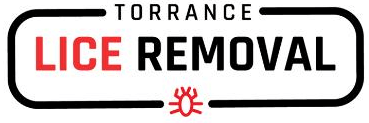Do I Have Lice or am I Paranoid?
Have you ever had that itchy feeling and started imagining that you might have lice? Feeling paranoid about such things is natural, but there are ways to determine whether there’s a problem. Learning some common signs of lice infestation and how to check for them properly can ease your worries and help you take the appropriate action.
Key takeaways:
- can be mistaken for dandruff, the residue of hair products, and skin conditions such as eczema and psoriasis.
- The life cycle of lice consists of three stages: nits, nymphs, and adults.
- Three types of lice can live on humans: head, body, and pubic lice.
- Diagnosis is determined by spotting lice or nits through inspection
The life cycle of lice consists of three stages:
- Nit (Egg). Nits are oval, yellow, or white and range in size from 0.8–0.3 mm. They are tiny, about the size of a grain of sand. Nits generally live on the base of the hair shaft near the scalp. They can hatch within 9 to 10 days.
- Nymph. Once the egg hatches, it releases a nymph. Nymphs are young adults. They continue to stay near the hair shaft. They are about the size of a pinhead and have a yellow hue. Nymphs become adults within seven days after hatching.
- Adult (louse). Adult lice are about the size of a sesame seed. They contain six legs and have a gray to white hue. Adults can live up to a month. Female lice are more prominent than males and can lay eight eggs daily.
Head lice
Out of the three types of lice, people are most aware of head lice. They can spread by crawling from head to head. They may also move from personal belongings, such as hats or brushes. Lice need human blood to survive and, therefore, can inhibit any individual regardless of cleanliness. Both children and adults can be at risk of getting lice — however, children are more susceptible due to activities involving head-to-head contact.
Symptoms of head lice
Below are some common signs to note for head lice:
- Intense itching
- Tickling sensation
- Trouble sleeping (lice are more active at night)
- Sores from constant scratching (which can become infected)
Body lice
Body lice, or “clothes lice,” are found on clothing. They also move onto the skin for human blood to survive. People who experience homelessness are at higher risk of contracting body lice. Body lice are common in people living in crowded conditions who do not shower often or wash their belongings. In addition, body lice can spread diseases such as typhus.
Symptoms of body lice
Body lice may have similar symptoms to head lice, such as itching. Symptoms include:
- Intense Itching
- Rashes
- Sores that can become infected
- Bitten areas that thicken and discolor, particularly in the midsection of the body
Pubic lice
Pubic lice, or “crabs,” are a type of lice that live in the genital area. Their nickname comes from their claws and body shape. They can also live on coarse hair such as beards, eyebrows, or eyelashes. Pubic lice spread through sexual contact. They can occasionally spread by physical contact and linen such as clothing, bedding, or towels. The most common symptom of pubic lice is intense itching of the genital area. Although pubic lice do not carry or spread diseases, the CDC recommends individuals with pubic lice get evaluated to rule out sexually transmitted diseases (STDs).
Symptoms of pubic lice
Pubic lice are also associated with itching. Additional symptoms can include:
- Intense genital itching
- Rashes due to constant scratching
- Secondary bacterial infections from vigorous scratching
- Blue or dark bite spots near the groin or lower abdomen
What can lice be mistaken for?
Itching is one of the first signs of lice, but this symptom alone cannot be a confirmation of the parasite. Other reasons cause itching and can often be mistaken for lice.
- Dandruff. Dandruff is a small piece of dry skin that causes itching. It is a common scalp condition that many people confuse with nits. Dandruff is flaky and easy to brush off, whereas nits are glued to the hair shaft and require a special comb to remove them.
- Hair and laundry products. Droplets of hair products can also be confused with lice. Poor shampoo rinsing or leaving hair products overnight can cause itchy scalps. Product debris can likewise be easy to remove. Contact dermatitis, which occurs when a new product causes itching or a rash, can occur with hair products and cleaning agents.
- Skin conditions. Many skin conditions, like eczema and scalp psoriasis, can be misdiagnosed as itching, dandruff, or reddish patches caused by lice.

